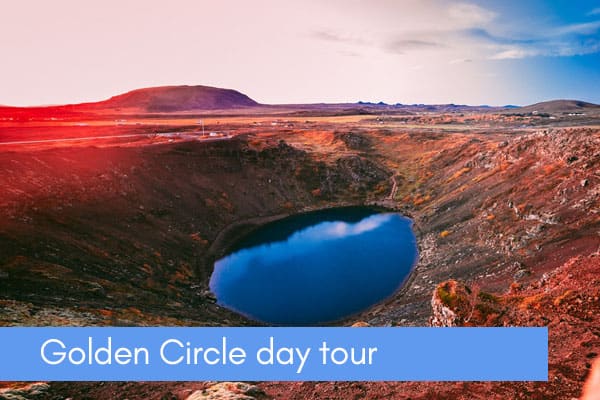Driving in Iceland
With the right car travelling around Iceland can be a joy
There is no denying that Iceland is a rugged and sometimes unforgiving place at times. It is also a beautiful and surprisingly easy place to drive around too. All you need to do is choose the right vehicle to match the exploration you intend to do, learn the rules of the road and pre-plan your routes.
At home you will leave the house and be prepared to a degree with your onward travel, but in Iceland it is an absolute pre-requisite to have all your bases covered. Once you do then you can relax and enjoy the scenery without worry.

Do I need a car in Iceland?
Having a car in Iceland gives you flexibility and freedom. There are many, many places you can visit in Iceland, but it is worth noting that these are not all close together and can be hours and hours apart. If you think you’ll hire a car for a day and drive round seeing everything Iceland has to offer, think again.
Using the car to get around Iceland is about planning. Planning your routes, planning where you’ll stay along the way and when you’ll fill up with petrol (answer: every time you see a petrol station fill up, no matter how much you have in the tank).
This is not to say having a car to use in Reykjavik and its close by surrounding area is not a great solution. You can have the freedom without the huge long drives that might be associated with exploring the further reaches of Iceland. On tours you will have a set route that the coaches or minibuses follow, so with your own car you can stop more often and perhaps visit less busy attractions or stay at busy ones longer or arrive earlier/leave later.
So hiring a car in Iceland is a choice on freedom, but it comes with a cost. It will be more expensive to hire a car with all the insurance and fuel implications than just hopping on a tour bus. If you are staying in Reykjavik, you do not need a car as tours to all the most popular attractions start and end here. If you want to explore Iceland further than just the main attractions then a car will allow you the opportunity to explore at your leisure.
If you are just staying in Reykjavik for a weekend, unless you have a specific event planned that you need to drive to, then hiring a car is not really necessary. You can get a transfer to Keflavik Airport on the bus and then book onto any tours leaving from Reykjavik. You can also use the hop-on-hop-off bus to get you around the city or hire a taxi (this will be expensive).

Decide on your routes before you hire a car so you only pay for the type of car you need for the roads you’ll be using.

Hiring a car in Iceland
If you’re planning on hiring a car in Iceland, there are several things you should consider to ensure you have a safe and enjoyable trip:
- Four-wheel drive: Iceland’s terrain can be rough, especially if you plan to venture off the beaten path. A four-wheel drive vehicle will give you better traction and handling on gravel roads and in inclement weather. Many rental places will only hire 4-wheel drive vehicles.
- Insurance: Check what insurance coverage is included in the rental price and whether there are any exclusions or limitations. You may want to consider purchasing additional coverage to protect yourself from potential damages or accidents. Although traffic will be less, there is plenty of opportunity for accidents and damage to the vehicle whilst driving in icy conditions. Make sure you are covered for all eventualities.
- Roadside assistance: It goes without saying really but you must make sure the rental company offers 24/7 roadside assistance in case of a breakdown or other emergency. This is particularly important if you plan to travel outside of major cities or during the winter months when weather conditions can be unpredictable. There is not much worse than breaking down in freezing cold conditions and realising you do not have roadside assistance available.
- Fuel policy: Check the fuel policy of the rental company to ensure you understand how to refill the tank and what penalties may be incurred if the car is returned without a full tank. You should keep your tank as close to full as possible at all time as a matter of practice as there can be long gaps between fuel stations in Iceland.
- Rental duration: Some rental companies offer discounts for longer rental periods, so consider how long you will need the car and whether it makes sense to rent for a longer period.
- Extras: Some rental companies offer additional extras such as GPS, child seats, or Wi-Fi hotspots. Consider whether any of these extras would be useful to you and factor in the cost when comparing rental options. We would consider GPS an essential extra if you do not have access to one as phone signals can be hit and miss when out exploring the wilds.
- Reviews: Always read reviews of the rental company before making a booking to ensure they have a good reputation for customer service and vehicle quality.

BOOK A HIRE CAR
You can book your hire car at the airport or for peace of mind and less form filling out upon arrival, you can pre-book your car online.
Use our link below to explore your options.
Driving in Iceland
Driving in Iceland can be a unique experience, with its stunning landscapes, varying weather conditions and challenging terrain. Here are some tips to keep in mind when driving in Iceland:
- Road conditions: The road conditions in Iceland can vary greatly, from well-paved highways to rough gravel roads. Check the weather and the type of road conditions on your route before setting out and adjust your driving accordingly.
- Speed limits: The speed limits in Iceland are lower than in many other countries, with a maximum of 50km/h in built-up areas, 90 km/h on tarmac roads and 80 km/h on gravel roads. It’s important to obey these speed limits, as they are enforced by police and can result in hefty fines.
- Weather: The weather in Iceland can change quickly, with strong winds, rain, and snow common. Be prepared for these conditions and adjust your driving, slowing down and taking extra caution if necessary. Many people visiting Iceland may not have driven in these conditions before so start slow until you are confident you can handle what the environemnt throws at you.
- Wildlife: Iceland is home to a variety of wildlife, including sheep, horses, reindeer and arctic foxes. These animals can sometimes wander onto the roads, so be vigilant and slow down if you see any wildlife near the road.
- Fuel stations: Fuel stations can be few and far between in some parts of Iceland, so it’s important to keep your tank full and plan your route accordingly. It’s also a good idea to carry extra food and water in case of emergency. Simple rule of thumb is if you see a petrol station, stop and top up your tank to full.
- F-roads: Some of the more remote parts of Iceland are only accessible by F-roads, these are rough gravel roads that require a 4×4 vehicle. If you plan to drive on F-roads, be sure to check their condition and make sure you get a suitable vehicle.
- Driving etiquette: Icelanders are known for their polite and courteous driving, so be sure to follow local customs, such as flashing your headlights to thank someone for letting you pass.
- Photo Opportunities: There will be so many. But, don’t be tempted to stop on the road because there are no other cars around and grab that picture. This is a sure way to get into trouble in Iceland, injured or otherwise. Wait for the next lay-by or safe pull over spot before taking your picture.

Roads in Iceland
Iceland has a network of roads that covers most of the country, including several highways and smaller gravel roads. Here’s an overview of the main roads in Iceland:
- Ring Road (Route 1): This is the main highway that circles the entire country, connecting all major towns and cities. It’s a well-paved road that’s open year-round, although parts of it may be closed during severe weather conditions.
- The Golden Circle: This is a popular tourist route that covers approximately 300 km and includes some of Iceland’s most famous landmarks, such as the geysers at Geysir, the Gullfoss waterfall, and the Þingvellir National Park. The Golden Circle is also part of the Ring Road.
- Highway 2: This is a highway that runs from the Ring Road to the east of Iceland, connecting towns like Egilsstaðir and Höfn. It’s open year-round, but weather conditions can sometimes make it challenging to drive.
- Highway 41: This is a highway that runs along the west coast of Iceland, connecting towns like Akranes, Borgarnes, and Stykkishólmur.
- F-roads: F-roads are unpaved gravel roads that lead to some of the more remote parts of Iceland, including the highlands. They are only accessible by 4×4 vehicles and are typically only open during the summer months.
- Gravel roads: There are many smaller gravel roads that lead to various parts of the country, including some of the more rural areas. These roads can be challenging to drive, especially during inclement weather, but they offer some of the most beautiful scenery in Iceland.
Not wanting to bang on about it but driving in Iceland is all about planning. Know what you are doing, where you are going and the types of roads you will encounter and prepare accordingly. Going out for a drive ad-hoc just to look around is not the best idea.

Are all roads open to cars in Iceland
There are roads in Iceland that are not open to all vehicles and some roads may only be accessible during certain times of the year.
- F-roads: F-roads are only open during the summer months (typically from June to September) and are only accessible by 4×4 vehicles. These roads can be quite rough and challenging to drive and many of them require river crossings, so it’s important to check the conditions and your cars abilities before attempting to drive on them.
- Mountain roads: There are several mountain roads in Iceland that are only open during the summer months and require a 4×4 vehicle. These roads can be quite steep and narrow, so they require very careful driving.
- Private roads: Some roads in Iceland are privately owned and driving on them without permission can result in fines or legal action. It’s important to respect private property and only drive on roads that are open to the public.
- Closed roads: During severe weather conditions some roads in Iceland may be closed to all traffic, including the Ring Road. It’s important to stay up-to-date on road conditions and weather forecasts, especially during the winter months when storms and blizzards can be common. Check the forecast before you leave for the enture length of your trip.

What to take when driving in Iceland
When driving in Iceland, it’s important to be prepared for varying weather conditions and remote areas where help may not be readily available. Here are some essential items to take with you in the car:
- Warm clothing: Even in the summer months, temperatures can drop quickly in Iceland, especially in the highlands or along the coast. It’s important to pack warm clothing, including a waterproof jacket, hat, gloves, and sturdy boots.
- Food and water: Some areas of Iceland are quite remote and it may be difficult to find food or water along the way. Pack plenty of water and non-perishable snacks or meals, just in case.
- Map and GPS: While most of Iceland is covered by a network of roads, it’s still a good idea to bring a map and GPS with you in case you get lost. Mobile coverage can be spotty in some areas, so having a physical map is always a good backup.
- First aid kit: A basic first aid kit can come in handy for minor injuries or accidents on the road.
- Tire repair kit: Many of the roads in Iceland are gravel or dirt which can increase the risk of flat tires. Pack a tire repair kit, including a spare tire so you are prepared for any unexpected situations.
- Flashlight: In the winter months, the days are short in Iceland, and it can get dark quickly. Bring a flashlight or headlamp to help navigate in low light conditions.
Most visitors will be hiring a car for their time in Iceland so the rental car company will provide most of what is listed above. Do check everything you get with your vehicle and its capabilities and make sure you have or purchase anything else essential before setting out.

Do I need chains on my tyres to drive in Iceland
In Iceland, it is not mandatory to have chains on your tires during the winter months. However, it is highly recommended to use them, especially if you are planning to drive on gravel or mountain roads, where the road conditions can be challenging, even in good weather. Snow and ice can accumulate quickly on the roads, and driving without chains can be dangerous.
If you are renting a car in Iceland, check with the rental company if they provide winter tires or chains. Some car rental companies may provide winter tires or chains as part of their service, while others may charge an additional fee.
Not to a labour a point but remember, the weather in Iceland can change quickly, so it’s always a good idea to be prepared for any conditions you may encounter on the road.
Aall the above is not meant to scare you off. Driving in Iceland is a fabulous way to get around and see the incredible scenery at your own pace and discover hidden gems too. Be prepared and then enjoy!


BOOK A HIRE CAR
You can book your hire car at the airport or for peace of mind and less form filling out upon arrival, you can pre-book your car online.
Use our link below to explore your options.












